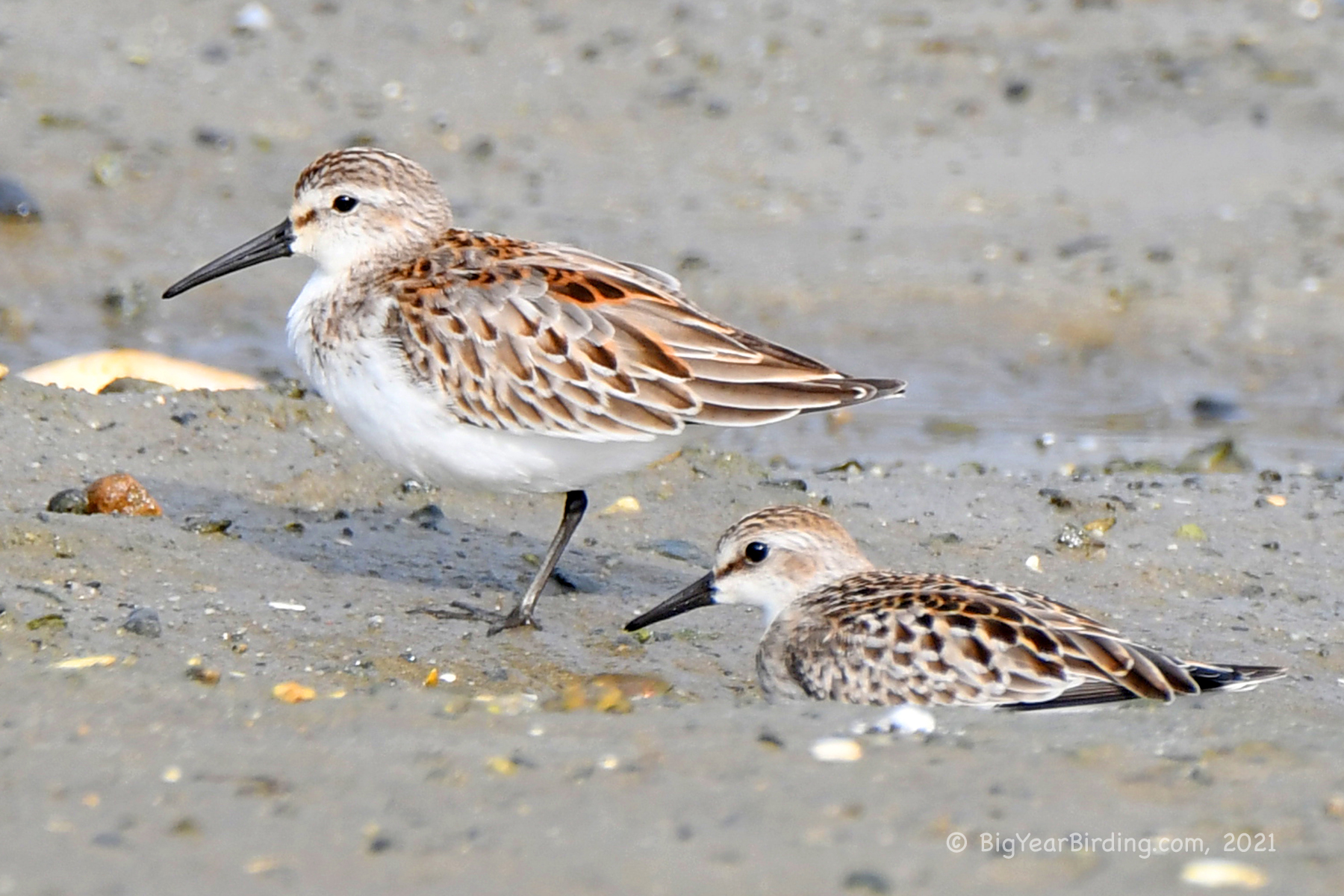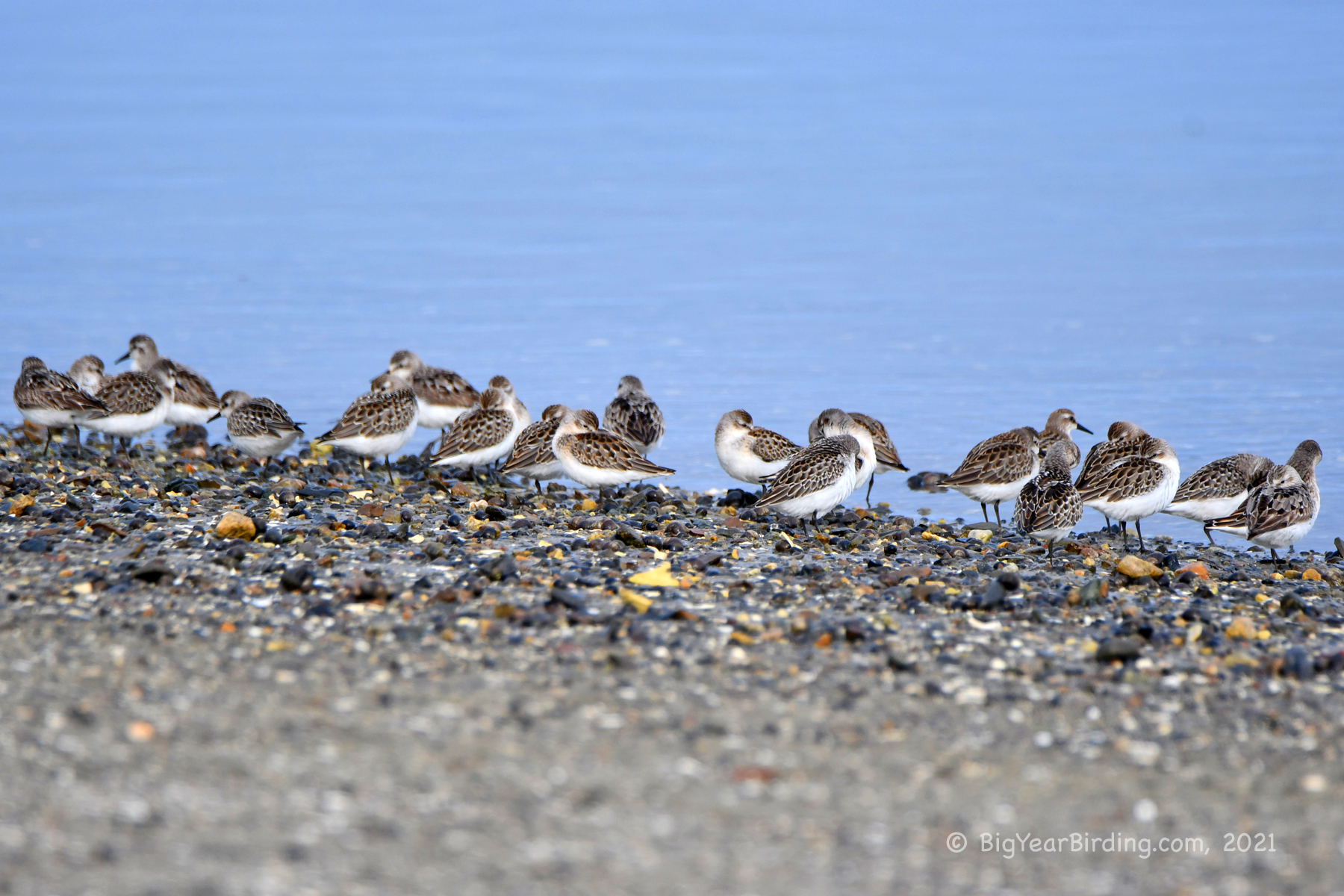
If you are a football fan and your quarterback makes an amazing touchdown pass . . . the crowd goes wild . . . then you notice a yellow flag on the field . . . holding. The touchdown is disallowed and you feel deflated.
That happened to me today.
This morning I was birding on a beach in Scarborough. This time of the year there are thousands of Semipalmated Sandpipers feeding at the edge of surf. Semipalmated Sandpipers are a tiny (less than an ounce) gray-brown bird with a black leg and black bill (pay attention, this will be on the test).

In Maine, serious birders spend lots of time scanning these huge flocks looking for a slightly larger (3/10 of an inch) bird with a longer bill . . . the highly prized “Western Sandpiper”. Breeding in Alaska, the Western Sandpiper normally migrates to its wintering grounds through the west and midwest. But each year, a few fly too far east and end up in Maine.
This morning I got one of these wayward “Westerns” intermixed with the nearly identical “Semipalmated”.
This brought my Maine Big Year total to 305 and I was so pumped.
Then I looked at my e-mail . . . there was a yellow flag on the field.
Last Wednesday, a bunch of birders and I reported a Forster’s Tern to eBird. eBird is a comprehensive database designed to track each year’s 100 million worldwide birds sightings. Incredibly, each report is reviewed by an actual human being, and our reviewer looked at our photos and believes our Forester’s Tern is actually a juvenile Common Tern.
Devastating!!!
So I began today with 304 birds for the year . . . and end the day at 304.
Bummer
